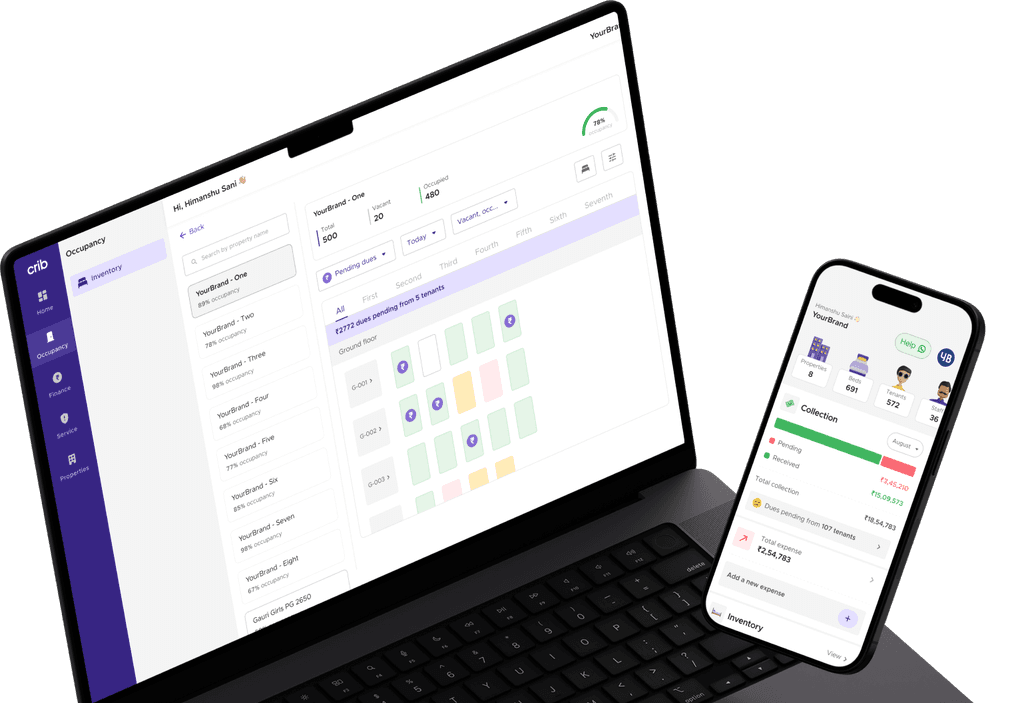Wondering what is subleasing? Understand lease transfers and responsibilities, scenarios when subletting is ideal, and why landlord consent is key.
A sublease is when a tenant rents out their leased property to another person, called a subtenant, for part or all of the lease term.
Subleasing can be a useful option for tenants who need to move temporarily or who can't afford the full rent but don’t want to break their lease. However, it’s important to understand that subleasing comes with its own set of rules, risks, and responsibilities.
How a Sublease Works
The process of subleasing involves the original tenant (sublessor) creating a separate agreement with the subtenant. This agreement outlines how long the subtenant will occupy the property, what the rent will be, and any other specific terms.
Relationship Between the Tenant, Subtenant, and Landlord
In a sublease, there are three key players: the landlord, the original tenant (sublessor), and the subtenant. The landlord remains the owner of the property and has a contract with the original tenant. The original tenant continues to be responsible for all payments and obligations outlined in the lease, while the subtenant pays rent to the original tenant and follows the terms set in the sublease agreement.
Requirements for Subleasing
Before proceeding with a sublease, the original tenant must often notify the landlord and seek approval. Some lease agreements contain specific clauses that either permit or prohibit subleasing, while others set conditions that must be met, such as the landlord’s right to vet the subtenant or approve the sublease in writing. If the lease doesn’t allow subleasing, the tenant may need to negotiate with the landlord to get permission.
Tenant’s Responsibilities After Subleasing
Even after a sublease agreement is in place, the original tenant remains responsible for ensuring that the rent is paid and that the property is kept in good condition. If the subtenant fails to uphold their end of the deal, such as not paying rent on time or causing damage, the original tenant is still liable. Additionally, the original tenant must ensure the subtenant adheres to the rules and terms of the original lease, as failure to do so could result in penalties or eviction notices. Essentially, the subtenant’s obligations are tied to the original tenant's responsibility to the landlord.
Subleasing and State Laws
Subleasing laws in India can vary by state and local regulations. Some states and cities have specific guidelines that affect whether a tenant can sublease their property and under what conditions.
Overview of How State and Local Laws Impact Subleasing
Indian tenancy laws, particularly under the Rent Control Act in different states, generally don't allow tenants to sublease properties without prior permission from the landlord. These laws protect landlords and ensure the property is used according to the lease terms. Many state-specific rent control regulations also provide tenants with certain rights, but these do not usually extend to subleasing without explicit consent from the landlord.
Examples of Specific Laws in Indian Cities
in cities like Mumbai or Delhi, tenants are often prohibited from subleasing a property without the landlord’s approval. If the original lease agreement does not address subleasing, the tenant may still face legal consequences for unauthorized subletting, such as eviction. Similarly, in smaller towns, local rent laws may place additional restrictions on the types of properties that can be subleased, especially in areas with high demand for rentals.
Sublease vs. Standard Lease
Understanding the differences between a sublease and a standard lease is crucial for anyone considering subletting their rental property. While both agreements involve renting property, they differ in terms of the parties involved, responsibilities, and flexibility.

Risks of Subleasing for the Original Tenant
Subleasing can expose the original tenant to several risks. It’s essential to understand these potential issues before entering into a sublease agreement, as the tenant remains responsible for various aspects of the property and lease.
Financial liability if subtenant doesn’t pay rent: Original tenant remains responsible for rent payments if the subtenant fails to pay, leading to potential financial strain.
Legal issues from subleasing without permission: Subleasing without the landlord’s approval can lead to eviction or penalties, especially if the lease prohibits it.
Risks from subtenant’s behavior: The original tenant may be held responsible for damages or lease violations caused by the subtenant.
Challenges if the subtenant refuses to vacate: If the subtenant doesn’t leave at the end of the lease term, the original tenant may need to pursue legal eviction, which can be costly and time-consuming.
Risks of Subleasing for the Subtenant
While subleasing can be a viable option for tenants seeking temporary accommodation, it also comes with risks that the subtenant must consider.
Limited legal protection: Subtenants lack direct legal recourse with the landlord and are mainly protected by the original tenant.
Eviction risk: If the original tenant breaks the lease or is evicted, the subtenant may also be forced to vacate with little notice.
Property condition issues: Subtenants may have limited control over property maintenance and might struggle to get issues addressed if the original tenant has a direct lease.
Subletting vs. Subleasing
Subletting and subleasing are two distinct arrangements that often get confused, but they have key differences.

Conclusion
In conclusion, both subletting and subleasing can offer viable solutions in certain situations but come with their own unique challenges. Subleasing, in particular, demands careful consideration of the potential financial and legal risks, as well as the need for thorough agreements to protect all parties involved. By understanding these dynamics, tenants can make informed decisions that help avoid future complications and ensure a smooth experience.
If you’re managing rental properties and need a simple, efficient way to handle subleases, leases, and other property management tasks, Crib can help. You can streamline property management, keep track of sublease agreements, and ensure both tenants and landlords are on the same page. Check out Crib today to simplify your property management experience!


























































































































































































